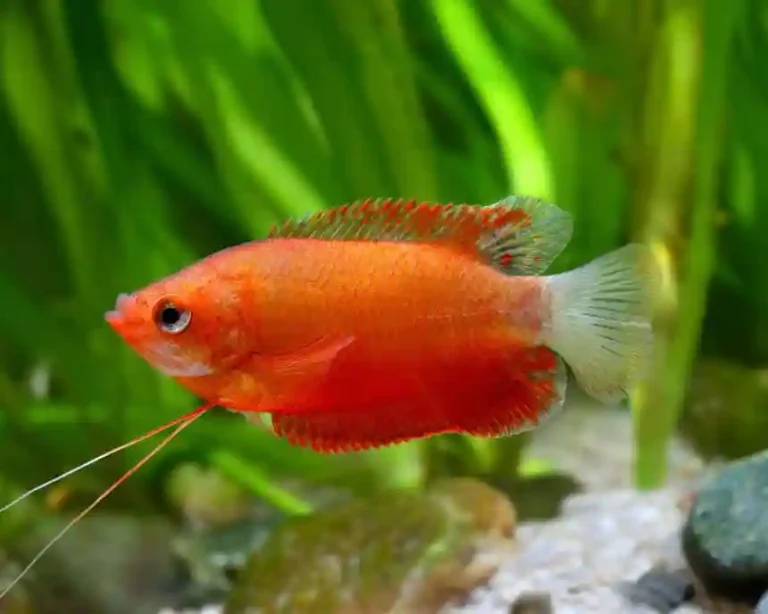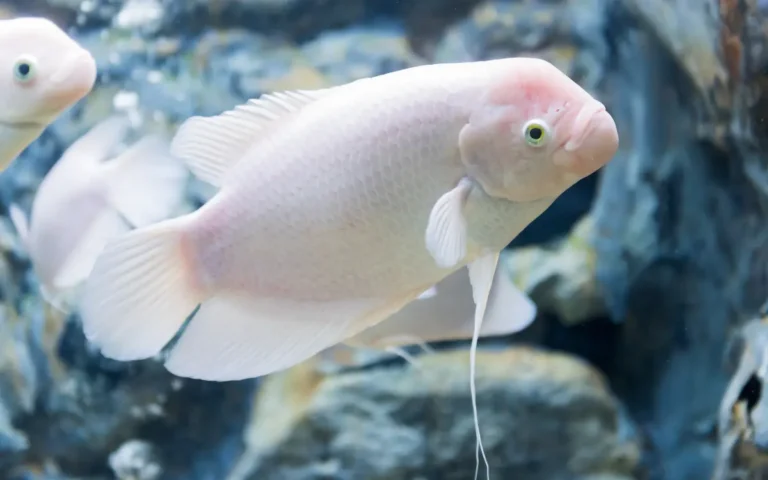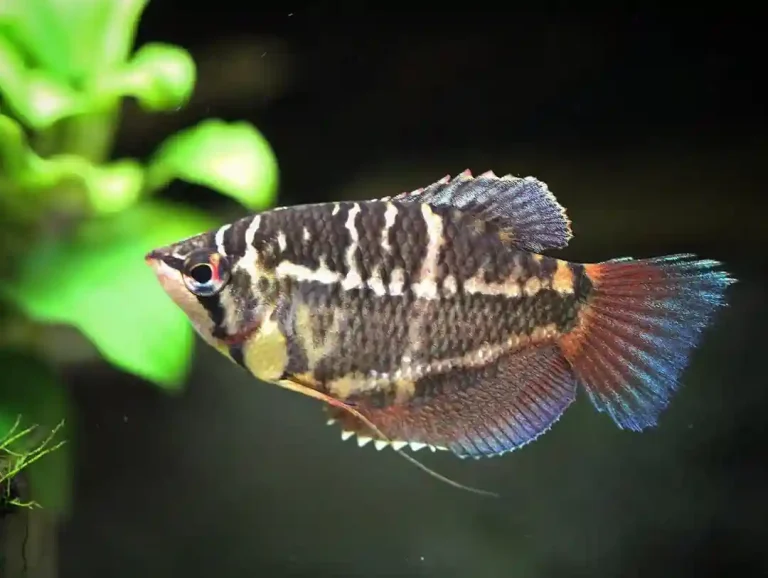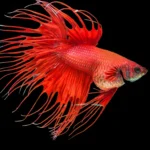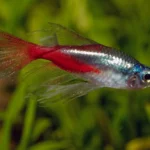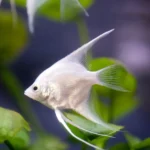The Red Tail Shark (Epalzeorhynchos bicolor) is a striking freshwater fish known for its jet-black body and vibrant red tail. Though called a “shark,” it’s actually a type of carp. Popular in home aquariums for its bold look and energetic swimming, this species also brings a touch of personality—but it requires careful tank planning due to its semi-aggressive nature.
This guide is written based on hands-on care experience and trusted aquarist resources, ensuring you get clear, practical advice that works in real tanks.
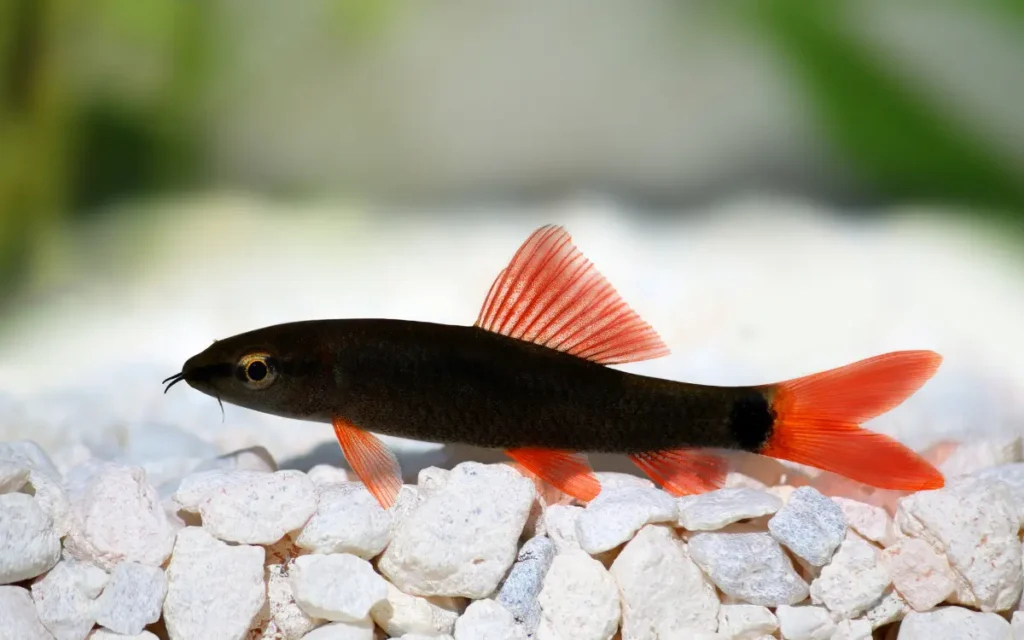
| Attribute | Details |
| Family | Cyprinidae |
| Temperament | Semi-aggressive, territorial |
| Minimum Tank Size | 55 gallons |
| Lifespan | 5–8 years |
| Diet | Omnivore: algae, flakes, pellets, live/frozen foods |
| Size | Up to 6 inches |
| Compatibility | Needs cautious selection of tank mates |
Ideal Tank Setup
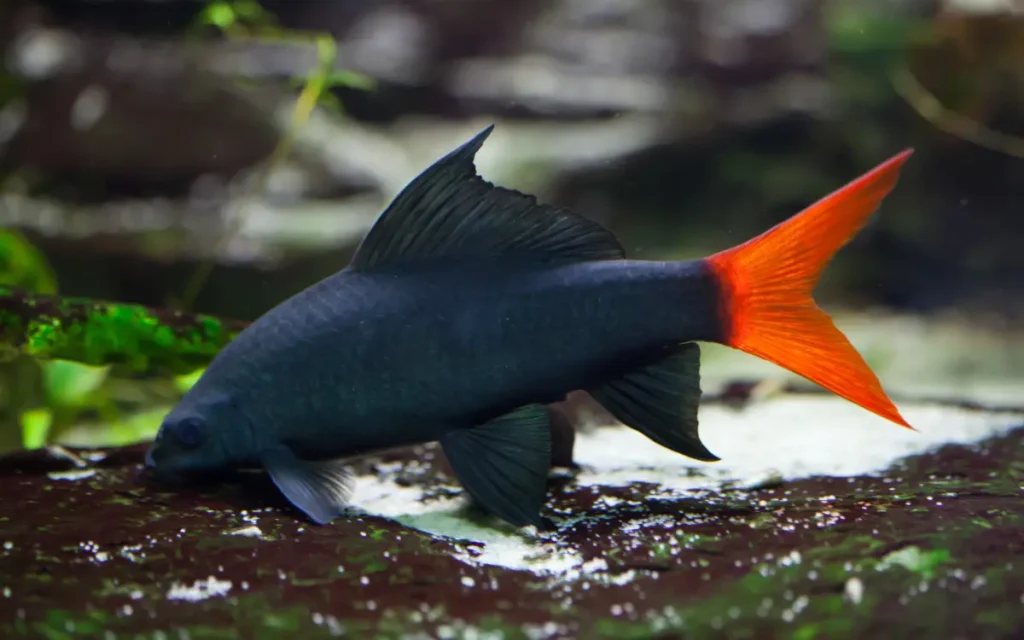
Red Tail Sharks are active swimmers and need space to establish territory. A 55-gallon tank is recommended to reduce aggression and provide ample swimming room.
Decorate the tank with rocks, caves, and driftwood to create multiple hiding spots. Use soft sand or fine gravel as substrate. Red Tail Sharks appreciate a well-aerated tank with moderate current and stable water conditions.
Maintain water temperatures between 72–82°F (22–28°C) with a pH of 6.5–7.5. Keep water hardness between 5–15 dGH. Use a high-quality filter and perform 25% water changes weekly to keep the environment clean and healthy.Pro Tip: Red Tail Sharks are territorial, so visual barriers like plants and caves help reduce aggressive encounters. Space and layout matter more than sheer tank size.
Feeding Red Tail Sharks
These fish are omnivores and benefit from a varied diet. Algae wafers or spirulina-based flakes can be offered regularly. Supplement their meals with live or frozen foods like brine shrimp and bloodworms a few times a week.
Include occasional blanched vegetables such as zucchini or cucumber for extra fiber. Feed once or twice daily, offering only what they can consume in 2–3 minutes.
Expert Insight: Color vibrancy often improves with quality nutrition. High-protein treats like bloodworms can intensify their red tail coloration.
Tank Mates for Red Tail Sharks
Red Tail Sharks can be territorial, especially as they mature. Avoid keeping them with other bottom dwellers of similar shape or color. Never house more than one Red Tail Shark in a tank unless it’s a very large setup (100+ gallons).
Compatible Tank Mates Include:
- Rainbowfish
- Danios
- Barbs (in large groups to reduce fin-nipping)
- Gouramis (non-aggressive types)
- Rasboras
- Angelfish (in spacious tanks)
Avoid shy, slow-moving, or bottom-dwelling fish like Corydoras or Loaches, as they may be harassed.
Real-World Tip: Adding Red Tail Sharks last in a community tank can reduce territorial dominance, giving existing fish time to settle.
Breeding Behavior
Breeding Red Tail Sharks in home aquariums is extremely rare. Most specimens are bred in commercial fish farms under controlled conditions using hormones.
If breeding is attempted, a separate breeding tank of 75+ gallons, dim lighting, and heavy plant cover is required. However, success is very unlikely without specialized equipment and conditions.
Common Questions
Are Red Tail Sharks aggressive?
They can be semi-aggressive, especially when establishing territory. Proper tank size and careful mate selection help reduce issues.
Do they need to be kept in groups?
No. Red Tail Sharks are best kept singly. Keeping more than one often leads to fighting.
Can Red Tail Sharks live with shrimp?
No, they may see small shrimp as food and will likely harass or eat them.
How big do Red Tail Sharks get?
They can grow up to 6 inches in length when fully mature.
Are Red Tail Sharks good for beginners?
They can be suitable for intermediate aquarists who have experience managing territorial fish.

